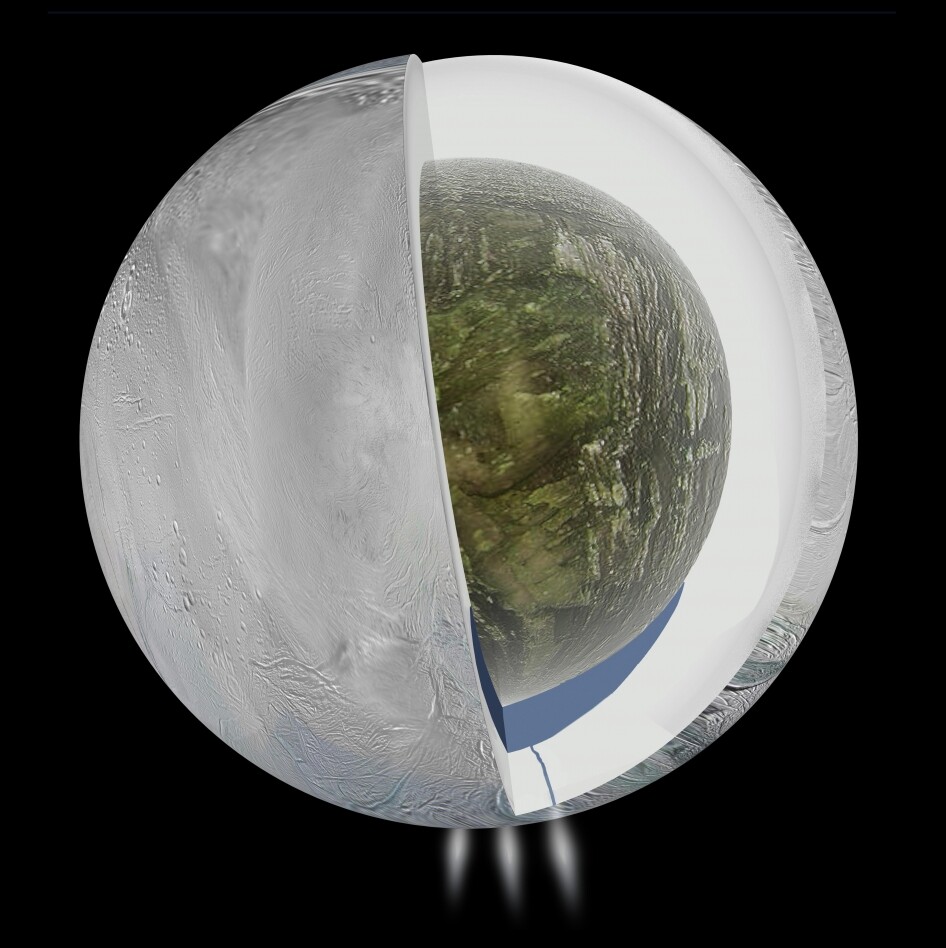With the use of its Cassini spacecraft and the Deep Space Orbiting Network, NASA has potentially discovered evidence for the presence of an ocean of liquid water locked away beneath the thick, icy crust of Saturn's moon, Enceladus.
Researchers had believed in the possibility of an underground body of water ever since jets of water vapor were detected venting from the moon's southern pole in 2005, however until now this line of reasoning had been purely conjecture.
Evidence for the existence of the hidden sea came in the form of gravity fluctuations detected by Cassini as it orbited the icy moon. The trajectory of a spacecraft is heavily influenced by variations in the gravity field of the celestial body that it's orbiting. These variations could be caused either by surface features such as a mountain range, a trench, or subterranean features such as a body of water.
The variations manifest themselves as alterations to the spacecraft's velocity, which in turn is read by the team back on Earth in the form of a radio signal, sent between Cassini and the Deep Space Network. This method can detect variations in the velocity of the spacecraft as minute as a drift of one foot per hour, and in essence has provided researchers with their first look at the interior composition of the moon.

In the case of Enceladus, the orbiting spacecraft detected a dip in the force of gravity exerted by the moon, which was evidence of a surface depression at the south pole. However, upon inspection, the depression was deeper than expected based on the severity of the dip in gravitational force.
"There must be a denser material at depth that compensates the missing mass: very likely liquid water, which is seven percent denser than ice," explained Luciano Less, lead author of a paper detailing the research. "The magnitude of the anomaly gave us the size of the water reservoir."
The measurements taken by Cassini suggest that the denser body of material is roughly six miles (10 km) beneath the moon's surface. Whilst there is no definitive proof that the dense material detected by Cassini is an underground ocean, the theory does fit the readings sent back by the spacecraft. The main reason for the excitement generated by the discovery is that the ocean environment possibly present under the surface of Enceladus is now one of the most attractive prospects for the discovery of extraterrestrial microbial life.
Linda Spilker, Cassini's project scientist at JPL, stated that the discovery “expanded our view of the 'habitable zone' within our solar system and in planetary systems of other stars." This revelation will pique scientific curiosity in Enceladus, which will undoubtedly be the subject of more attention in the years to come.
Source: NASA





